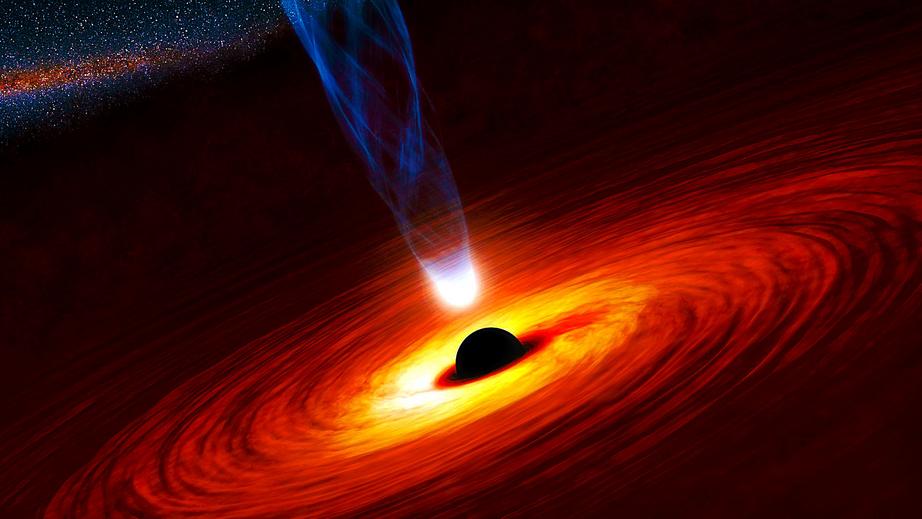Supermassive black holes can force a shredded star to collide with its own death spiral
Savage.
When a wandering star passes a little too close to a supermassive black hole, that incursion of personal space doesn't go unnoticed. Immense tidal forces generated by the black hole proceed to rip the star apart, shredding it into pieces as it's pulled into the void.
This brutal phenomenon is called a tidal disruption event, and we now have a better idea of what this stellar death spiral could look like, with scientists reopening the case on a cosmic incident that took place some 290 million years ago.

In doing so, a team led by MIT has found evidence that tidal disruption could be even more calamitous than we thought, with light measurements suggesting that star matter violently interacts with itself as it's drawn into a black hole.
Back in 2014, astronomers detected signs of a tidal disruption event in a distant galaxy called PGC 043234, observing intense flaring as a star much like our Sun was consumed by a supermassive black hole at the galaxy's centre.
This event became known as ASASSN–14li, and while it occurred about 290 million years ago, we only first registered it in 2014, because PGC 043234 is located 290 million light-years from our Solar System, and it took that long for the light from the tidal flaring to reach us.
But when going over ASASSN–14li data recorded by NASA's Swift satellite, researchers noticed something unusual. The satellite's telescopes captures X-rays in addition to visible and UV light, but the flaring produced by the tidal disruption saw a month-long lag between some of the readings.
"We discovered brightness changes in X-rays that occurred about a month after similar changes were observed in visible and UV light," says MIT astrophysicist Dheeraj Pasham.
What could account for this lag? According to the team, it's because the flaring that we're picking up represents emissions of light from two separate sources.
In their hypothesis, once the star passed too close to the black hole at PGC 043234's centre, it was converted into a stream of tidal debris falling inwards to the black hole's accretion disk.
But before it settled into the disk, the stream of debris overshot the black hole in an elliptical arc, before being pulled inwards again. At one point in this arc, the stream of matter began violently colliding with other parts of the star being drawn into the void – which is where and when the first emissions became viewable:
"We think this means the optical and UV emission arose far from the black hole, where elliptical streams of orbiting matter crashed into each other," explains Pasham.
"Returning clumps of debris strike the incoming stream, which results in shock waves that emit visible and ultraviolet light," adds one of the team, Bradley Cenko, acting Swift principal investigator from NASA's Goddard Space Flight Centre.
Then, about a month after these collisions occurred, the star matter flared again, as it became heated and compressed while settling into the black hole's accretion disk – which explains why the X-ray readings only showed up later.
"As these clumps fall down to the black hole, they also modulate the X-ray emission there," says Cenko.
According to the team, the staggered star consumption process can be likened to a case of cosmic indigestion – something other researchers have also found, where black holes have difficulty finishing their meal if they try to eat too much matter too quickly.
"In essence, this black hole has not had much to feed on for a while, and suddenly along comes an unlucky star full of matter," says Pasham.
"What we're seeing is, this stellar material is not just continuously being fed onto the black hole, but it's interacting with itself – stopping and going, stopping and going. This is telling us that the black hole is 'choking' on this sudden supply of stellar debris."
The team thinks that other tidal disruption events would result in a smoother death spiral, but to see how common this kind of choking behaviour is, we'll have to wait for our next chance to observe more of these intense cosmic phenomena.
"For supermassive black holes steadily accreting, you wouldn't expect this choking to happen," explains Pasham.
"The material around the black hole would be slowly rotating and losing some energy with each circular orbit. But that's not what's happening here."
The findings are reported in The Astrophysical Journal Letters.

